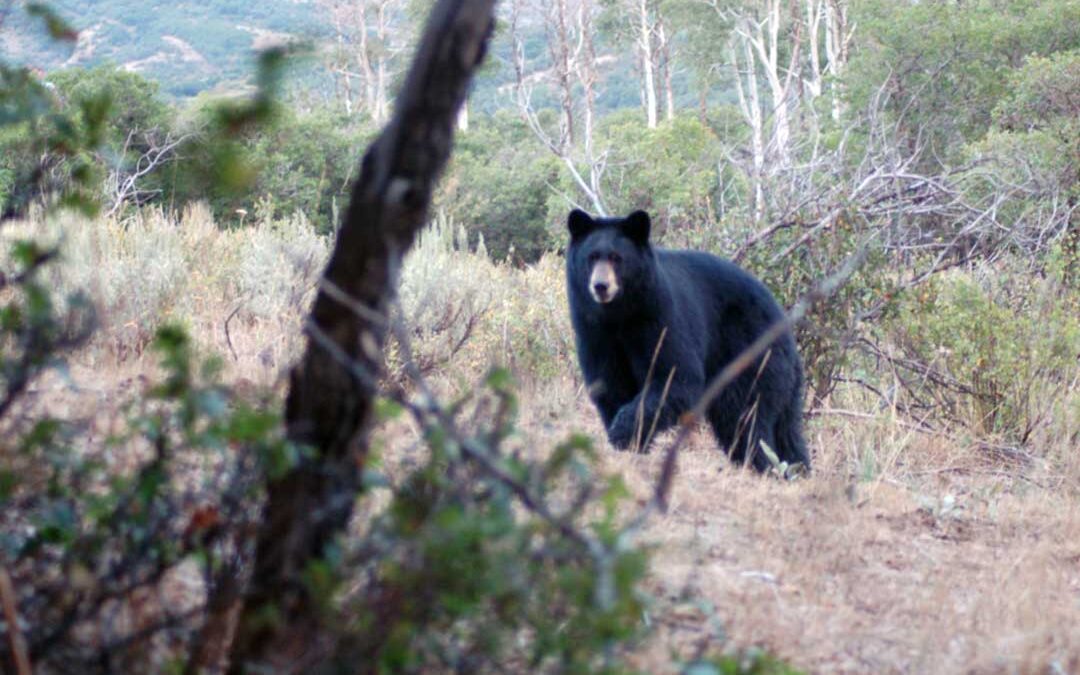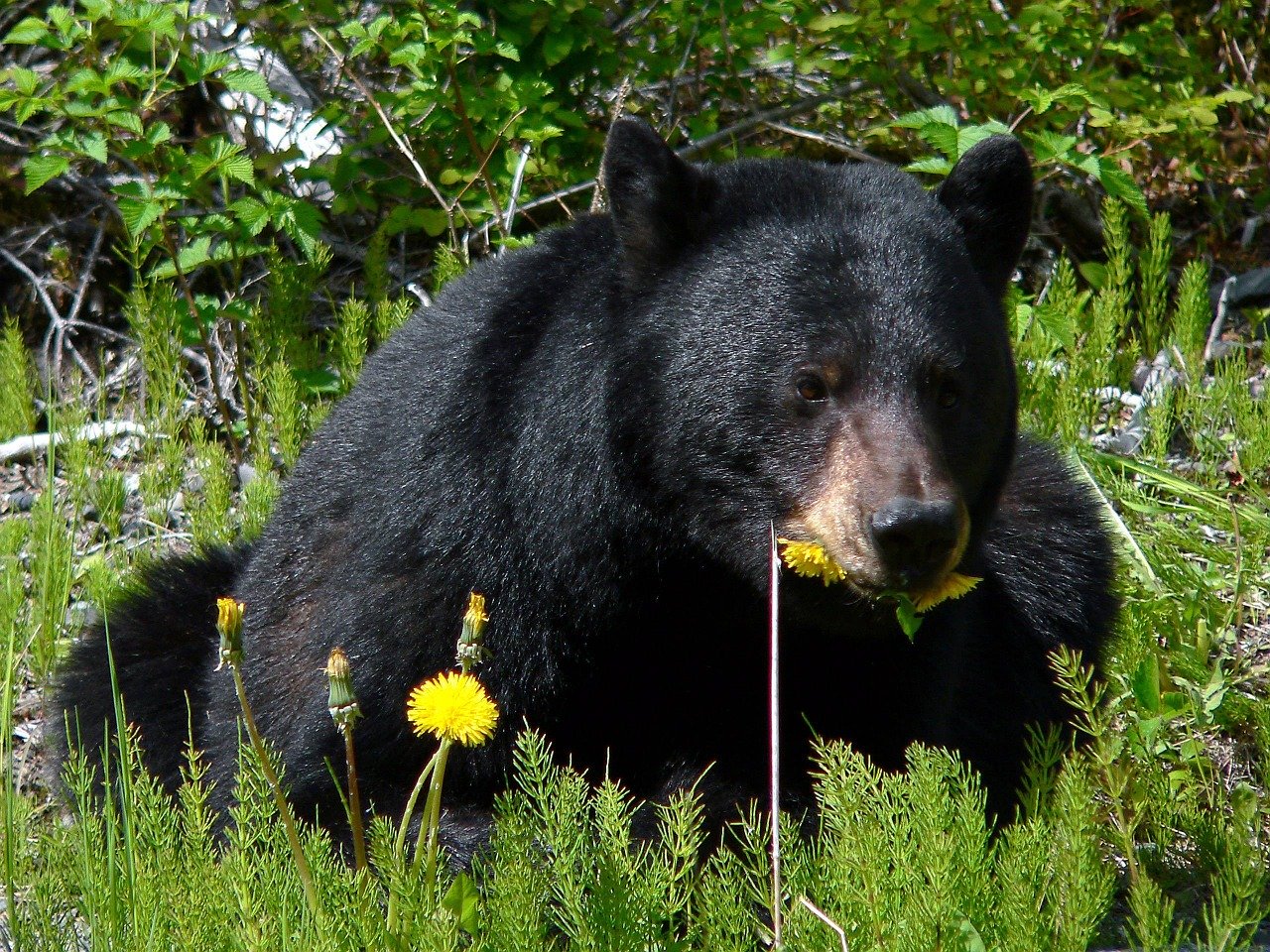I definitely learned more about elk hunting by assisting others than I ever learned hunting on my own.
Hunting out west in the high country is a totally new experience for many of us “flatlanders.” I was in my early thirties before I had the opportunity to head to the wilds of western Colorado for mule deer and to this day, every detail of the hunt remains etched in my mind, from first sighting the majestic Rockies while driving through the flat plains of New Mexico, to that herd of 12 elk that came trotting within 60 yards of our drop camp.
I was a fledging outdoors writer at the time, and had made arrangements with an outfitter in Westcliffe, Colorado to hunt from one of his several drop camps. After a brief “howdy” in town, we followed him about 15 miles to a winding ranch road that lead through a beautiful valley with spruce, aspens and other trees that were foreign to me at the time. The nearby mountain sides were lit up like the proverbial Christmas tree with mountain parks (meadows) surrounded by thick growths of aspen, fir and spruce. A winding creek that I later discovered was full of brook trout wound its serpentine course through the valley.
We soon arrived at the tent camp the outfitter had set up for us. There was a wood burning stove inside with everything necessary to spend several days in the back country, including a good supply of aspen firewood, split and stacked behind the tent. He instructed us to bring only our food, water and hunting gear and a light fly rod with some wet flies or spinning tackle if we wished to fish. He gave us instructions as to where and how to hunt the surrounding mountain country, wished us good hunting and fishing, stating that he would return in a couple of days to check on us. If we harvested a buck in an area where we needed help packing, we were instructed to drive back to his camp house and leave a note on the clipboard he kept on the front porch.
My buddies and I spend the next five glorious days hunting the lower elevations and saw countless smaller mule deer bucks but nothing big enough to harvest. We learned a great deal about hunting the mountain country, sighted our first wild bear and elk and discovered things not to do in bear country. I had the bright idea of leaving my pack on top of a mountain late one evening so I wouldn’t have to tote it back up the next morning. I’d found a vantage point overlooking a well used game trail and planned to “set” on it come daylight the next day. I had a couple of breakfast bars in the pack–built in bear attractant as it turned out!
The next morning, I spent the first thirty minutes retrieving my gear from the top of that little mountain. A bear had ripped everything to shreds; there’s still a Buck knife up there somewhere I never found! We hunted, we fished, we cooked out in the remote camp and saw lots of wildlife but not one mule deer was taken. The really mature bucks were still up high but…we all learned from the experience and left vowing to return the next year.
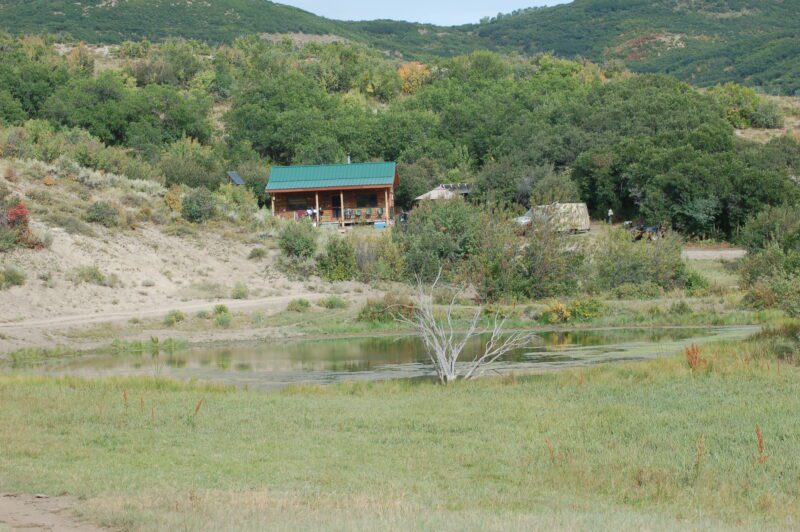 About this time my learning curve for hunting the high country steepened. I began fishing with and writing about a well-known bass guide at Lake Fork in eastern Texas. Larry Large had grown up hunting elk and during our fishing trips, we talked way more about elk than bass. Soon thereafter Larry invited me up to hunt elk with him on a huge Indian Reservation where he was head guide for a well-known outfitter. Here my Elk 101 class really began. Clients annually took some giant bulls on the reservation, but I was there to cut my elk hunting teeth and target cow elk. That was fine with me because I have always been had a taste for elk steaks and cows are much better eating than bulls. It was a win-win deal for me.
About this time my learning curve for hunting the high country steepened. I began fishing with and writing about a well-known bass guide at Lake Fork in eastern Texas. Larry Large had grown up hunting elk and during our fishing trips, we talked way more about elk than bass. Soon thereafter Larry invited me up to hunt elk with him on a huge Indian Reservation where he was head guide for a well-known outfitter. Here my Elk 101 class really began. Clients annually took some giant bulls on the reservation, but I was there to cut my elk hunting teeth and target cow elk. That was fine with me because I have always been had a taste for elk steaks and cows are much better eating than bulls. It was a win-win deal for me.
I got to hunt pretty much on my own in some of the best elk country in the world from ladder stands and spend as much time as I wanted in the woods. Stands were situated on well used trails the elk used on a daily basis heading to and from the lush meadows in the valley to the cooler elevations up high where they spent the heat of the day. This very important piece of information has helped me put elk on the meat pole through the years. Usually but not always, elk move daily from lower elevation feeding areas in the morning hours to higher bedding areas. There are exceptions when the bulls stay up high during pre-rut and feed in the high parks, but eventually the cows in the lower elevations pull them down to where they are much easier to hunt.
Killing an elk is one thing; getting all that tasty meat off the mountain is quite another! That first hunt on the reservation in N.M., I shot what I thought was an average size cow. At that time, my elk hunting experience was limited. As it turned out, the cow was, to this day, the biggest my buddy has ever seen harvested. After the bow shot at about 20 yards, the big cow went straight up the mountain, hit a trail and traveled a good quarter mile. A quarter mile on flat ground is not really very far but on a steep mountain trail, it seems much farther. I marked the trail with flagging (which we later removed) and followed a pretty good blood trail until it played out. My buddy came to help with the retrieval and when we came to a fork in the trail, he went left and I to the right. In a few minutes, he found where the giant cow had jumped a log laying across the trail and expired. I had made a liver shot, thus the long trailing job.
It was time for more education from my buddy. We were looking at an animal the size of a horse, way up on a mountain. How would we ever get all this meat off the mountain? Thanks to gravity and an old logging road my friend knew about, he was able to drive his Bronco to the edge of the road. We used a chain hoist in difficult spots and let gravity do the rest. Since those early days, I’ve been in on the retrieval of many elk and no two situations were the same. The one commonality to most recoveries of downed elk is the fact that the critters seem to always find the most difficult spots to expire after the shot. Learning how to quarter the animals where they fall is a must for any elk hunter. Rare is the case when they are killed close to any sort of road. Several good pack boards should be a prerequisite for any elk hunter unless of course, packhorses are available.
After hunting elk several years with my buddy in New Mexico, I received a call on day that went something like this, “Luke, I’m about to begin outfitting in northern Colorado for elk and bear. I need a partner and I want it to be you.”
I guided deer and hogs hunts back in Texas, so why not give the new adventure a go? I remember my first client, Roger from Oklahoma. Roger and I were in a roomy pop-up blind situated about 25 yards from a water hole where elk frequented. Roger was my kind of a hunter. He wanted to harvest his first elk a majestic mature bull was of course his first choice, but he was more than willing to use his cow tag at the first opportunity. During the afternoon hunt, with about 45 minutes of legal shooting time left, I was doing some soft cow calls. Off to the right, we heard the unmistakable sound of elk clanking along the trail, hitting downs trees with their hooves. Through the scrub oak that bordered the game trail, I soon made out a big cow followed by another younger cow and spike bull. This little herd went straight to water and began drinking on the far side of the little pool. My charge for the day had his arrow knocked and his bow in position. I noticed the arrow making figure eights. I could hear his breathing coming in short gasps. I asked him to lower his bow and wait. My hope was the barren cow would come a bit closer and that he would gain his composure. The little herd decided to exit on our side of the water, heading to one of the lower meadows to feed. When the cow got within 30 yards, I asked Rog to draw his bow and make the shot. I remember whispering to him. “Take a deep breath, settle that top green pin at the crease of her shoulder. You are about to kill you first elk.” My first client had taken an elk! My confidence level went through the roof! Another guide lesson learned. Sometimes a good elk guide’s job is simply to be there and instill confidence, especially with someone new to hunting elk.
I definitely learned more about elk hunting by assisting others than I ever learned hunting on my own. When spooked, whitetail deer will often bound a hundred yards back into cover. Elk are different; it’s not hard to push a herd of elk into the next zip code. A good case in point occurred four years ago. I had my hunter positioned in a tree stand a few yards downwind from a heavily used elk trail. I was on top of a ridge 80 yards away calling toward the side of a mountain with heavy spruce where elk bed. From my vantage point, I could see our camp a couple miles away down the mountain. From camp, it’s possible to glass the entire mountainside we were hunting. My phone began to vibrate when our cook back at camp texted me.
“Luke, I just counted 83 head of elk moving toward you, almost all in single file. Something must have spooked them they aren’t running but moving along at a fast walk.” In a few minutes I heard the strangest sound coming through the black timber, exactly like fast moving water moving through rocks or boulders. But there were no streams on the side of the mountain we were hunting. Above me, I began to get glimpses of elk moving toward my hunter. I later learned it was the elk’s hooves hitting the rocks and downed timber that I was hearing. The entire herd had passed by him at a fast walk the closest, at 25 yards but not one presented an ethical shot. He also described the sound of the elk passing as “running water” – one of those things you just have to witness to fully comprehend.
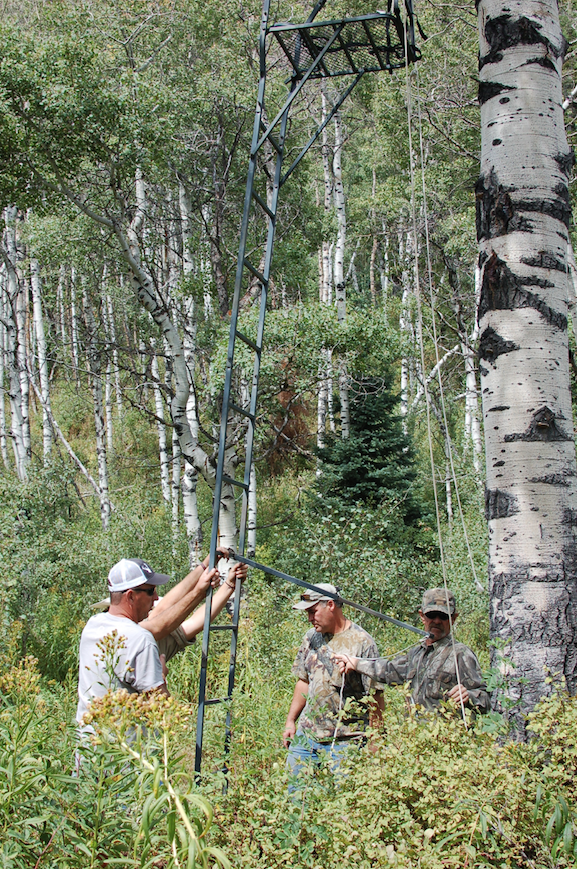
There is a water hole in a valley not far from camp that is a favorite “cooling off” spot for bear, especially on warm afternoons. I was guiding a hunter that had both bear and elk tags. Elk and bear sign were thick around this watering spot and I had him situated about 25 yards from the trail elk were using to come to water. About an hour after daylight, I had a sow bear walk across the draw, between where I was setting and my hunter. About ten minutes later, I see my hunter walking at a fast pace toward me. He walked right up to me and he was breathing hard.
“Luke, I just looked death in the face” were his exact works. I guessed he had seen his first bear. “I had a big male mountain lion stalk with six feet of me! I never heard him approach, just looked around and there he was in a crouched position, glaring at me.”
When he moved to get up, the cat jumped up above him and stayed put. We can only surmise it was planning an attack from above. After describing the experience to the other guides at camp, we came to the general consensus that this was a fluke occurrence and that the lion would be long gone. I decided to position my hunter on the opposite side of the water hole for the afternoon hunt. It was pretty warm, and I expected him to harvest a bear coming in to cool off. About 30 minutes before the end of legal shooting time, I noticed movement out of the corner of my eye. It was the big cat sitting on his haunches on the opposite side of the pond, in the exact spot it had appeared that morning. My hunter could not see him from where he was sitting. I hated to break the silence and possibly spook elk or bear, but I began waving my cap over my head. The cat instantly picked up on the movement and crouched low, glaring toward my position about 60 yards above the pond. He had no intention of leaving. He had obviously staked out the water hole as his private hunting grounds. The worst thing that could have happened was for the cat to continue around the water hole and walk up on my hunter, concealed in a little blind in the shoreline reeds.
I took my coat off and began waving it over my head. The cat never flinched. I was scared to death and came bailing off the hill toward my hunter who was now savvy to what was going on, but he still could not see the cat. We backed out of there, keeping our eye on the cat until we were out of sight. My young hunter will surely be telling his grandchildren about that morning up in the high country of Colorado when he stared down.
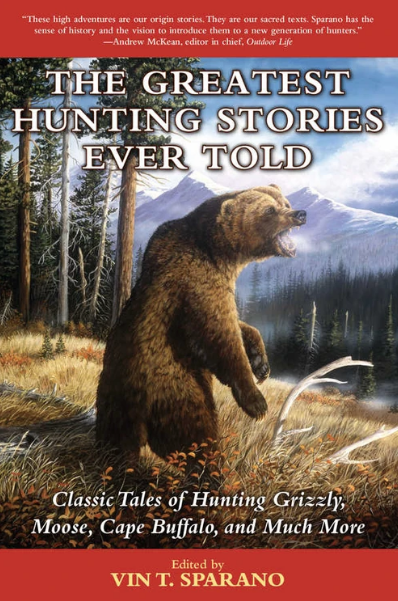 Elephant. Bear. Moose. Rhinoceros. Buffalo. Lion. Since prehistoric times man has hunted. An elemental part of life, seeking out and overpowering large, strong, and fast animals has been a pivotal part of human evolution. In later times, when hunting for food wasn’t necessary, man still tracked down his prey. Following an instinct for adventure, for the thrill of defeating formidable opponents, man hunted.
Elephant. Bear. Moose. Rhinoceros. Buffalo. Lion. Since prehistoric times man has hunted. An elemental part of life, seeking out and overpowering large, strong, and fast animals has been a pivotal part of human evolution. In later times, when hunting for food wasn’t necessary, man still tracked down his prey. Following an instinct for adventure, for the thrill of defeating formidable opponents, man hunted.
Now, for the forty million Americans who hunt, here is the perfect companion. The Greatest Hunting Stories Ever Told is a collection of true hunting tales, told by some of the most courageous and clever sportsmen. The quest for adventure has touched all these writers, who convey the drama, tension, stamina, and sheer thrill of tracking down game. Buy Now

